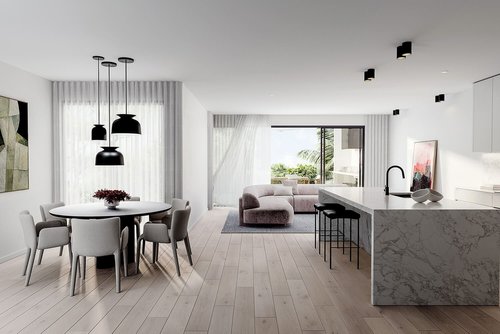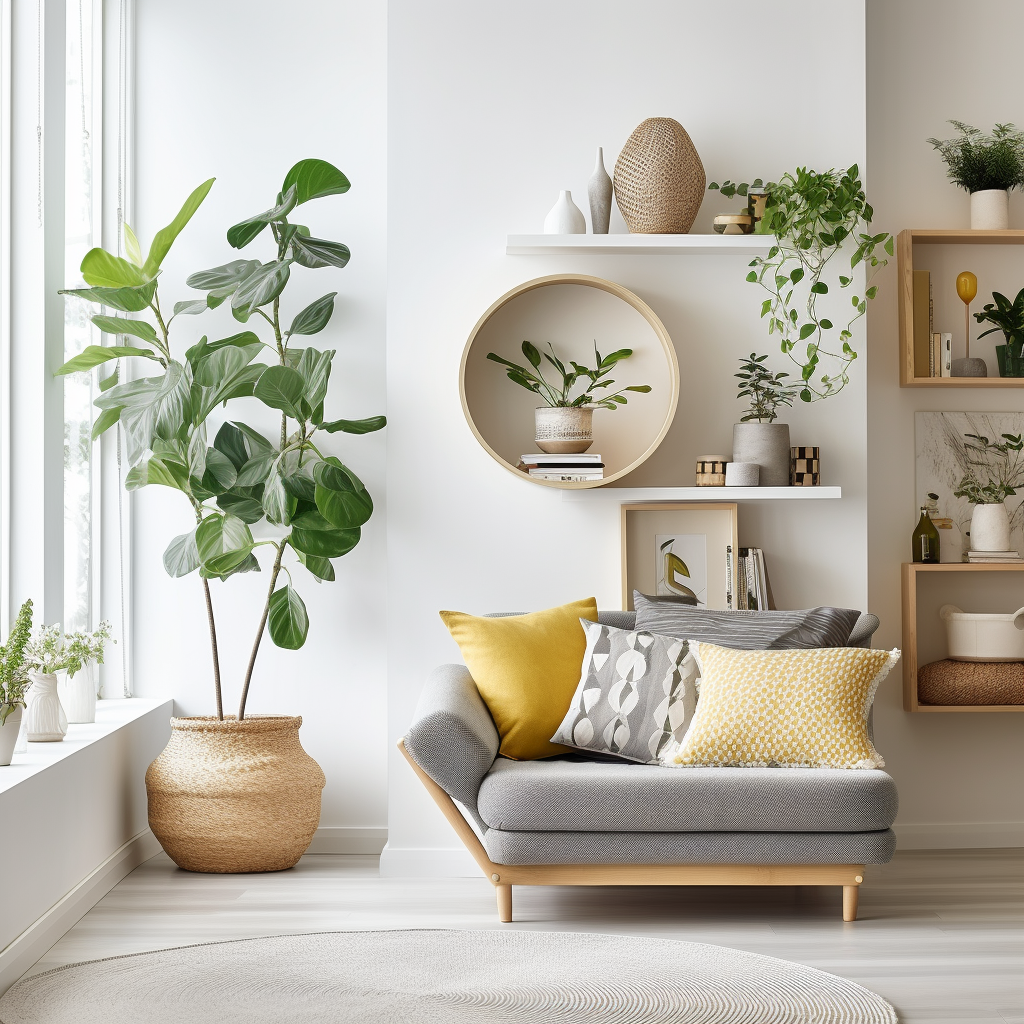Change Your Area with Expert Interior Design Miami Providers
Change Your Area with Expert Interior Design Miami Providers
Blog Article
Why Understanding the Concepts of Inside Layout Is Vital for Effective Space Preparation
Understanding the principles of interior style is essential to reliable room preparation, as it prepares for creating settings that balance performance with visual allure. Necessary aspects such as equilibrium, flow, and proportion are not merely decorative considerations; they are critical in enhancing just how a room is used. When these concepts are attentively applied, the result is an environment that motivates both productivity and health. Numerous ignore just how these ideas link with useful applications, leading to missed out on chances in design efficiency. Discovering this connection discloses understandings that might change any room.
Value of Space Planning
Room preparation is a fundamental element of interior decoration that considerably influences the performance and looks of a space. It involves the tactical plan of furnishings, components, and building elements to enhance using available area while improving the overall user experience. Reliable area preparation addresses different factors, consisting of flow, availability, and the specific requirements of the occupants.
One of the primary advantages of room preparation is its ability to improve spatial performance. Interior architecture Miami. By thoughtfully arranging a format, developers can ensure that every location serves an objective, reducing clutter and promoting a sense of order. Additionally, appropriate room planning cultivates a harmonious environment, permitting smooth motion and interaction within a space
Furthermore, successful space preparation takes right into account all-natural light, sightlines, and the relationship between various areas. This all natural approach not only raises the visual allure yet likewise contributes to the well-being and efficiency of the occupants. Eventually, a well-executed area plan is instrumental in developing a well balanced and welcoming environment, making it essential for any kind of interior design project.
Trick Concepts of Interior Decoration

One essential principle is equilibrium, which can be balanced, asymmetrical, or radial. Balanced balance creates a feeling of order, while asymmetrical equilibrium offers a much more vibrant aesthetic charm. An additional essential concept is proportion and range, making sure that the size of furniture and decor components associate harmoniously to every other and the total space.
Shade theory likewise plays a significant duty, impacting mood and perception. Developers make use of shade schemes to stimulate specific feelings and boost the spatial experience. In addition, the concept of rhythm entails creating a feeling of motion via repeating of patterns, shapes, or colors, leading the eye throughout the space.
Finally, the concept of focus routes attention to centerpieces, enabling a clear narrative within the design. Interior design studio Miami. By sticking to these essential principles, interior designers can create environments that not just meet functional needs yet additionally reverberate with the passengers on a psychological degree
Effect On Performance and Circulation

The arrangement of furnishings, the option of products, and the assimilation of technology all play crucial duties in achieving optimal performance. Putting seating locations in closeness to workspaces can Check This Out assist in interaction and cooperation, therefore improving performance. Additionally, guaranteeing that paths are clear and unblocked enables effective movement, reducing congestion and promoting an all-natural flow throughout the room.
Additionally, incorporating aspects such as lighting and color can even more help in delineating areas, making it simpler for individuals to navigate their setting. Thoughtful space planning considers not just the physical aspects of design however also exactly how customers engage with their surroundings. Eventually, an emphasis on capability and circulation not just boosts the customer experience but also elevates the general performance of the room, creating an atmosphere that fulfills the demands of its residents while fostering a feeling of consistency and balance.
Enhancing Aesthetics and Mood
3 crucial elements-- color, lights, and texture-- play pivotal duties in enhancing the aesthetics and mood of an indoor area. Shade establishes the emotional tone; cozy colors like oranges and reds evoke energy and warmth, while cooler shades such as blues and environment-friendlies advertise calmness and peace. Selecting a harmonious color palette can change a space, creating a cohesive and visually enticing setting.
Texture includes deepness and interest, contributing to the responsive experience within a room. A mix of appearances-- smooth surface areas, luxurious fabrics, and natural materials-- can produce aesthetic intrigue and enhance comfort. For example, combining a soft velour sofa with a streamlined glass coffee table can develop a balanced aesthetic that welcomes interaction.
Illumination, commonly an overlooked element, considerably influences mood. All-natural light fosters an open, ventilated environment, while purposefully positioned synthetic lights can find this create heat and highlight architectural features. Dimmer buttons make it possible for versatility, permitting for adjustments to suit various activities or times of day.
Integrating these three aspects thoughtfully not just elevates the aesthetic charm of an area however additionally grows an ambience that reverberates with its desired purpose, inevitably enhancing the total experience for its owners.
Practical Applications in Reality
Applying interior design principles in the real world requires a thoughtful method that integrates shade, structure, and illumination right into day-to-day rooms. By comprehending just how these components work with each other, individuals can create environments that are not only visually enticing but harmonious and additionally practical.
For circumstances, in a small living area, using a light shade combination can make the space really feel bigger and more open. Strategic use mirrors can improve all-natural light and develop an impression of depth. Incorporating numerous appearances via fabrics, such as carpets and paddings, can add heat and rate of interest without overwhelming the senses.
Illumination plays a vital role in defining the atmosphere. Layered illumination, being composed of ambient, job, and accent options, permits adaptability in mood settings. In an office, for instance, a combination of all-natural light, desk lights, and decorative components can improve performance while maintaining an inviting setting.
Moreover, recognizing spatial connections and furniture arrangement can lead to improved capability. By sticking to principles such as equilibrium and percentage, one can guarantee that areas offer their desired purpose while staying cosmetically pleasing. Overall, functional applications of indoor design principles considerably improve the livability and allure of any kind of setting.
Conclusion
In verdict, understanding the principles of interior decoration is crucial for effective space preparation, as it fosters a balance between functionality and looks. By using vital principles such as percentage, color theory, and circulation, developers can develop environments that enhance both use and visual allure. Inevitably, this expertise adds to click this link the development of spaces that not only meet sensible demands but also elevate the general ambience, leading to more reliable and pleasurable experiences for individuals.
Comprehending the concepts of interior layout is fundamental to efficient room preparation, as it lays the groundwork for producing settings that harmonize performance with aesthetic charm.Space preparation is a fundamental element of interior layout that significantly affects the functionality and appearances of a room. Additionally, proper space planning fosters a harmonious setting, allowing for seamless motion and interaction within an area.
Furthermore, the concept of rhythm involves producing a feeling of movement via rep of forms, patterns, or shades, directing the eye throughout the area.
In verdict, comprehending the principles of interior style is vital for effective area preparation, as it fosters an equilibrium in between functionality and visual appeals.
Report this page